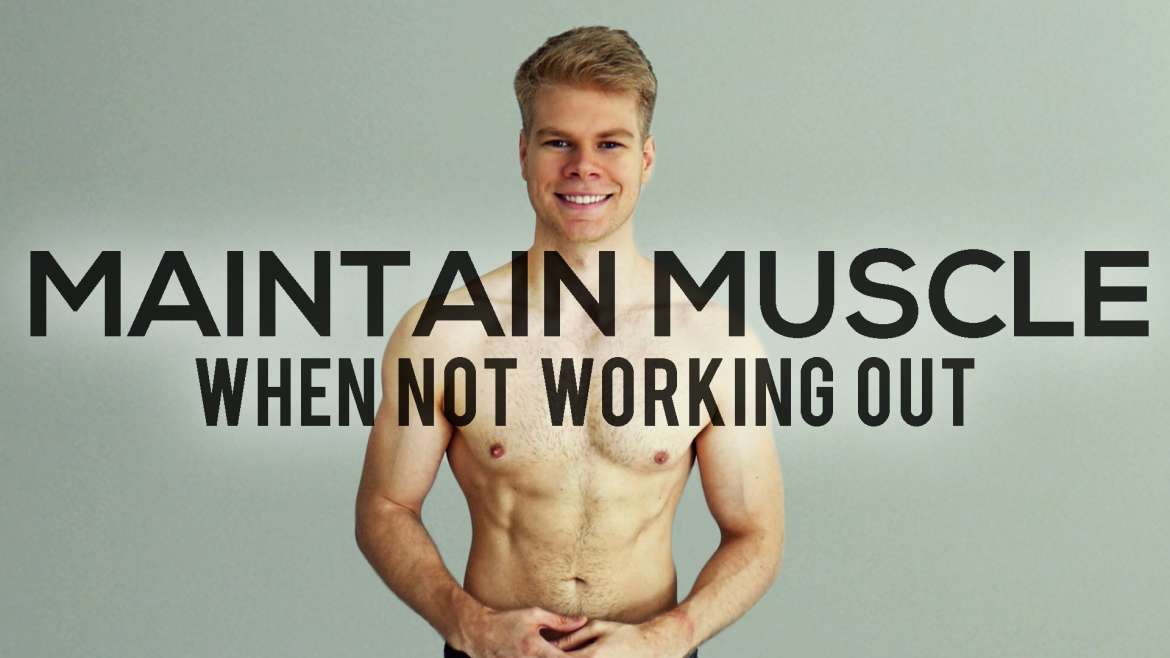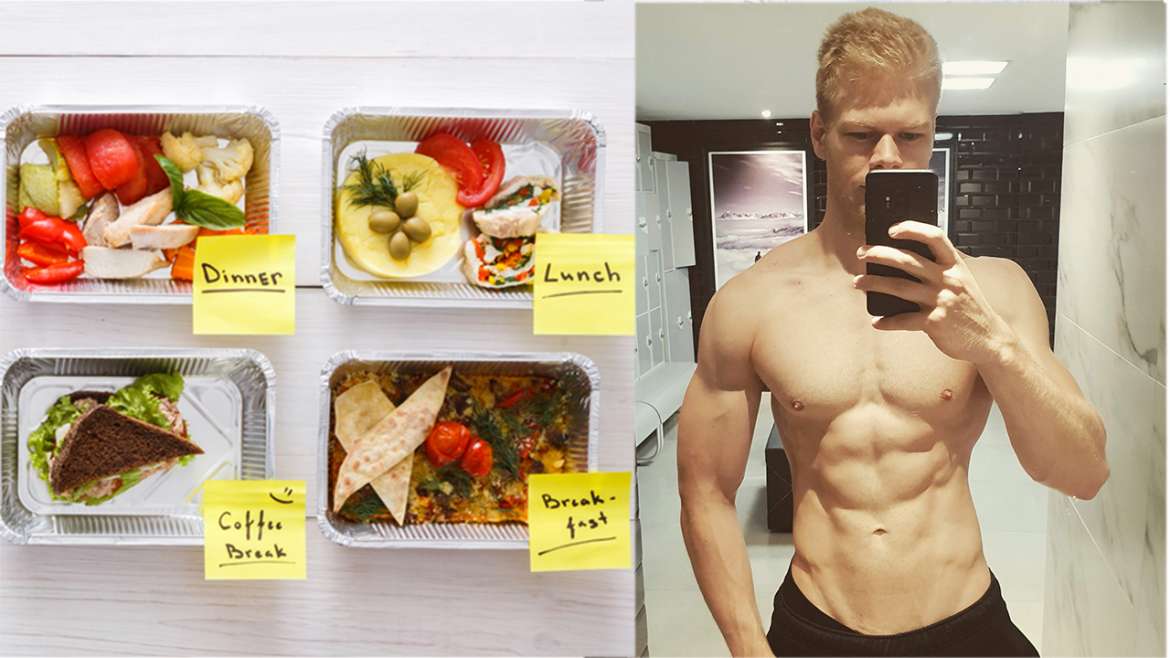Want To Know How To Prevent Muscle Loss When You Can’t Work Out? Read On…
The longer you follow a strength training routine, the higher your chances of getting injured. Obviously, training with ideal form and giving your body enough rest will greatly decrease this risk. But even under perfect conditions, there are some things you simply have no power over.
Someone else might drop a weight plate on your foot or do something similar that is just as dangerous. There is also the possibility of hurting yourself outside of the gym. Unfortunately, that’s just how life is and when you find yourself among the unlucky the only question that matters is:
How Do You Minimize / Prevent Muscle Loss When You Can’t Work Out?
This question isn’t only important once you’re injured, of course. The same rules apply if you get sick, are traveling or simply don’t have the time to train. You put too much work and dedication into your body to lose all your gains in a matter of weeks.
Before we go over what you should do to prevent muscle loss when not working out, here is some good news. Muscles take time to break down, just as they take time to grow. So if you’ve built a solid base of muscle and strength before your break, a week or two out of the gym won’t do much harm. In some cases, this can even be beneficial by preventing overtraining.
You can even expect to maintain most of your lean muscle mass after longer breaks (e.g. a month) if you optimize what is still in your power – your diet, recovery and mindset. Here is how it’s done correctly:
1. Consume Enough Protein
Muscle tissue needs protein and stimuli to grow. While you won’t be able to maintain the level of tension your muscle is used to without exercising, you can maintain (or even increase) your protein intake. Protein, or rather the amino acids in protein are the building blocks of muscle tissue and a high protein diet helps preserve muscle mass over longer periods of time.
Exactly How Much Protein Do You Need Per Day?
The age-old bodybuilding advice is to consume one gram of protein per pound of bodyweight per day. Most studies on optimal protein intake agree with this and recommend anything between 0.8 grams and 1 gram per pound of bodyweight. I wouldn’t go below 0.8 grams as this will most likely increase muscle breakdown.
If you’re unsure about your daily intake try to stay on the safe side and risk going above 1 gram per pound of bodyweight. Even though excess protein will be stored as body fat, you won’t notice the difference unless you consume crazy amounts every day.
2. Don’t Go Into A Calorie Deficit
Next to not consuming enough protein, a calorie deficit is the second big mistake you can make when not working out. In a calorie deficit, you basically provide your body with less energy than it expands. Your body will react accordingly and get rid of any unnecessary tissue in order to have enough energy to keep itself alive.
This results in weight loss due to less fat AND muscle tissue, which are most easily broken down. While less fat sounds great, less muscle is definitely not what you want. Normally, you could avoid the muscle loss through continuous strength training, but when injured this is not an option. So, what do you do instead?
Usually your best bet is staying at a calorie maintenance level. That way you make sure to give your body enough calories (= energy) to slow down the breakdown of lean muscle tissue, while also avoiding fat gains.
How Do You Reach A Calorie Maintenance Level?
Finding out how many calories you need to consume to reach maintenance level is actually pretty easy and will depend on your Total Daily Energy Expenditure (TDEE). TDEE is the number of calories that your body burns in one day. It is calculated by estimating how many calories you burn while resting (= Basal Metabolic Rate or BMR) and adding a certain number of calories on top, depending on how often you exercise.
The simplest method of calculating your TDEE is by using an online calculator such as this one. It will ask you for your age, weight, height and weekly exercise. While the result will not be 100% accurate – since we all have different metabolisms and BMRs – it will give you a good idea of how many calories you need to consume in order to maintain your current weight.
3. Watch Your Macros
Our bodies need certain quantities of all the macronutrients to function properly and build muscle at an optimal rate. When you can’t work out, you still want to stick to the rules of proper diet planning. This includes having your daily calorie breakdown at roughly 40% carbohydrates, 30% protein and 30% fats. Depending on how long your break is going to be you might want to cut down on carbohydrates and increase your protein intake (see point 1).
Stick to healthy foods and try to avoid junk food (even though it won’t kill you every once in a while). Also, continue taking your supplements (especially protein powder and fish-oil). Creatine won’t do much good when you aren’t working out, but it won’t harm you, either.
4. Stay As Active As Possible
Any kind of physical activity is better than none whatsoever. So even if you can’t deadlift or bench press, look for ways to (moderately!) train those parts of your body that are not affected by the injury. If this isn’t an option either, at least take regular walks and keep your body active.
The worst possible scenario would probably be the one where you lie in bed all day and watch your muscles deteriorate. Unfortunately, this might very well be the case post surgery. Then you want to put even more emphasis on what I mentioned before regarding protein intake and calorie maintenance level.
5. Have The Right Mindset
Being injured sucks, but don’t dwell over it too much! Instead of wasting your extra time complaining about your bad luck, use it to prepare for your comeback. If your injury was caused by your strength training, ask yourself how it can be avoided in the future. Optimize your workout plan and think about how you can reach your fitness goals.
When I was forced to take a six-week break from the gym due to a surgery, I focused on creating more content for this blog and growing the Simple Muscle brand. I saw the time off as a lesson, which taught that obstacles can be overcome and that there is no point in feeling sorry for yourself.
Try to focus on what’s ahead and remind yourself how muscle memory will help you gain back any losses in lean mass within a few weeks. Yes, it’s real and studies have proven how once you return to your old training routine your muscles will quickly reach their “pre-injury” size and strength level.
Preventing Muscle Loss When Not Working Out Or Injured – Summary:
- Consume enough protein to preserve muscle mass over longer periods of time.
- Don’t go into a calorie deficit. It will speed up muscle breakdown.
- Watch your macros and stick to the rules of proper diet planning.
- Stay positive and look for ways to train body parts that are not affected by the injury.



